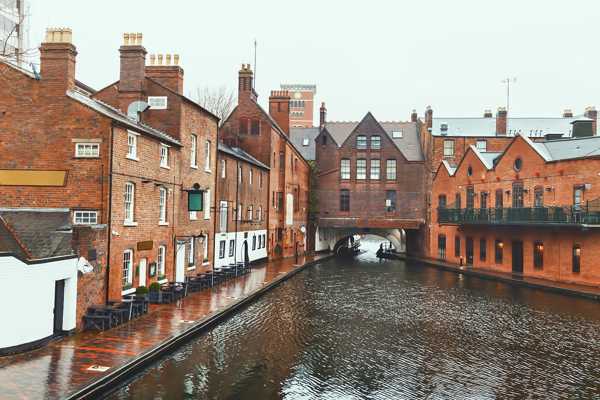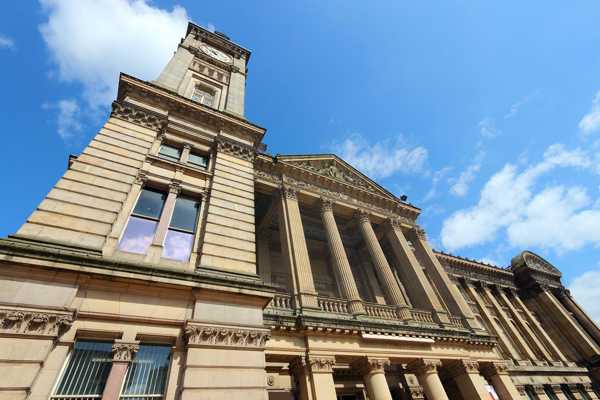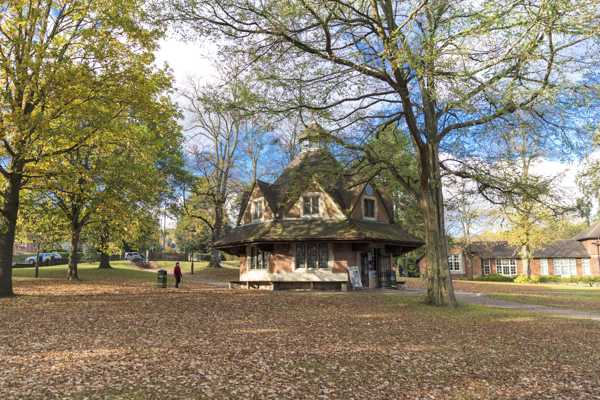St Philip's Cathedral in Birmingham is a Grade I-listed building and also the 3rd-smallest cathedral in England. Located in Colmore Row, this landmark is exceptional in terms of national, historical and architectural importance. Whether you're interested in history, religion or art, there's a lot to do and see here.
You're welcome to participate in guided tours, exhibits and talks about the significance of the cathedral. Explore the courtyards, which are adorned with statues and monuments, including the Obelisk. The tours at St Philip's Cathedral are free of charge and last around 20 minutes. You can also participate in prayer services, which take place every day.
St Philip's Cathedral in Birmingham - one of the highlights of 13 Best Things to Do in Birmingham (Read all about Birmingham here)
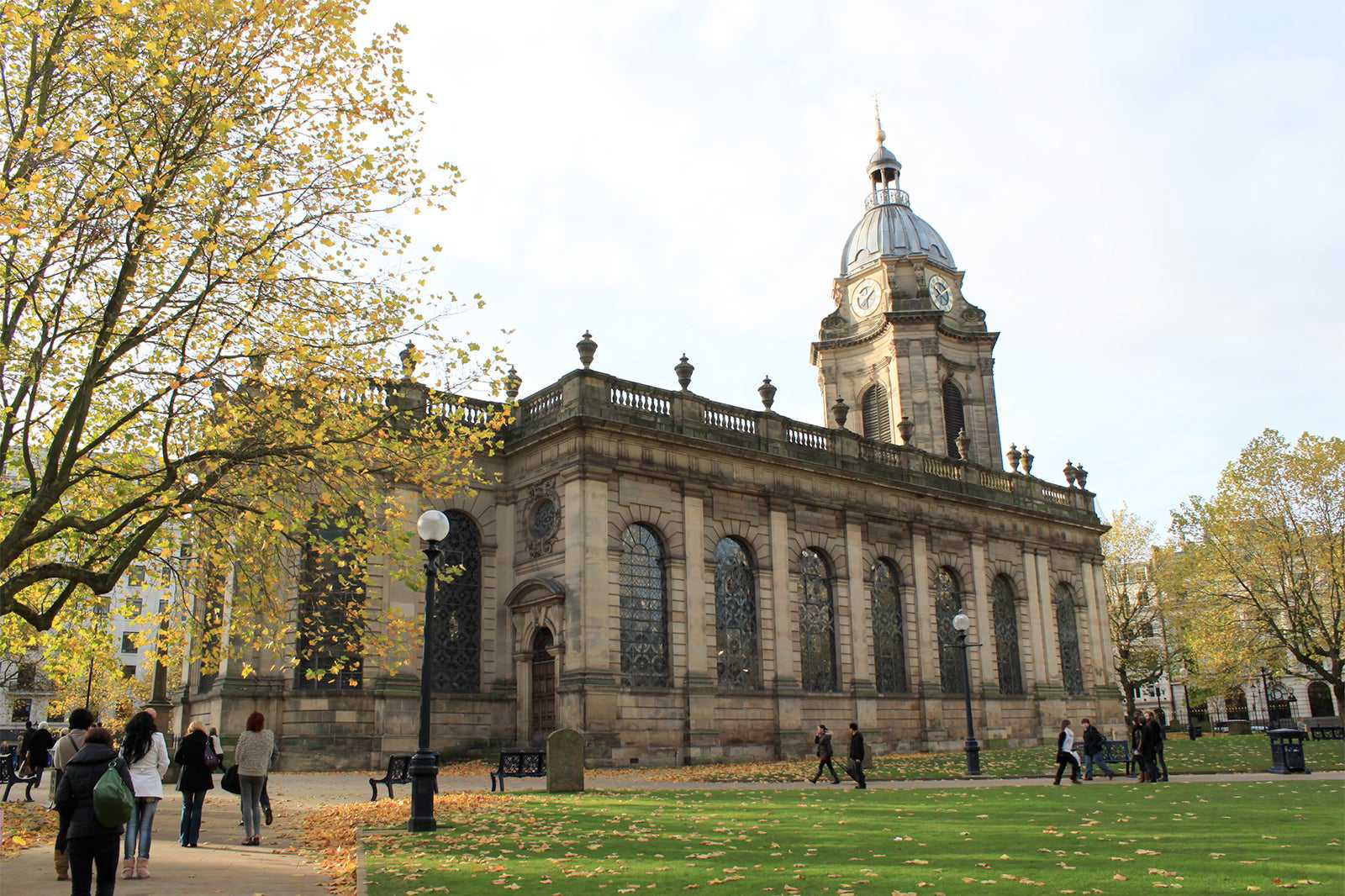
foto de Christophe.Finot (CC BY-SA 3.0) modificada
What are the highlights and features of St Philip's Cathedral?
St Philip's Cathedral is an English Baroque parish church dating back to the early 18th century. Built using brick and stone, it features large marble columns that not only support but also accentuate its ornate ceiling. The 12 bells inside the cathedral are rung on Sunday Mass and most Mondays around 6 pm to 9.30 pm.
The cathedral is one of the smallest in England, measuring merely 45 metres in length. Even so, what it lacks in size, it makes up for in beauty. It's best known for its Pre-Raphaelite stained-glass windows that depict the Nativity, Ascension, Crucifixion and Last Judgment of Jesus Christ. These were designed by Sir Edward Burne-Jones.
Right outside the cathedral, you’ll find lush gardens that offer a peaceful and relaxing escape from the bustling city centre. You can have a picnic once you’re done exploring the historical site. Although it’s open to the public, you need to avoid making too much noise.
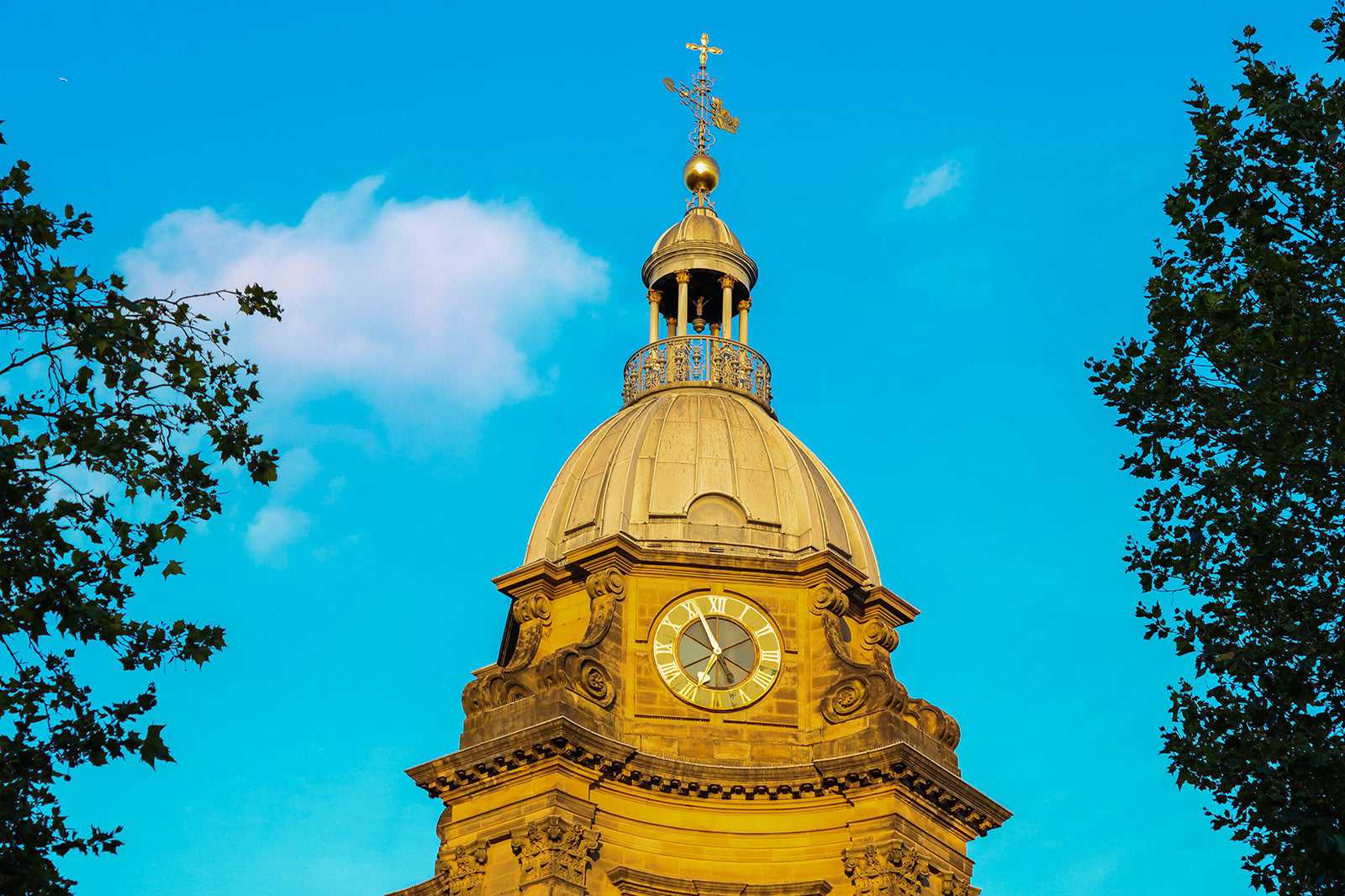
A brief history of St Philip's Cathedral
The plans for St Philip's Cathedral came into fruition when the medieval church of St Martin in the Bull Ring was unable to accommodate the growing population of Birmingham. Construction started in 1711, then 4 years later, it was ready for consecration. It was dedicated to the Apostle Philip to honour Richard Philip, who donated the land where the cathedral was built.
Due to the Industrial Revolution, some churches in rapidly growing cities like Birmingham were raised to cathedral status. In 1905, St Philip's became known as the Cathedral of Birmingham.
The cathedral received significant damage during WWII. Luckily, all of its precious treasures, including Sir Edward Burne-Jones' famed stained-glass windows, were removed before the bombings. Everything was repaired and restored after the war.
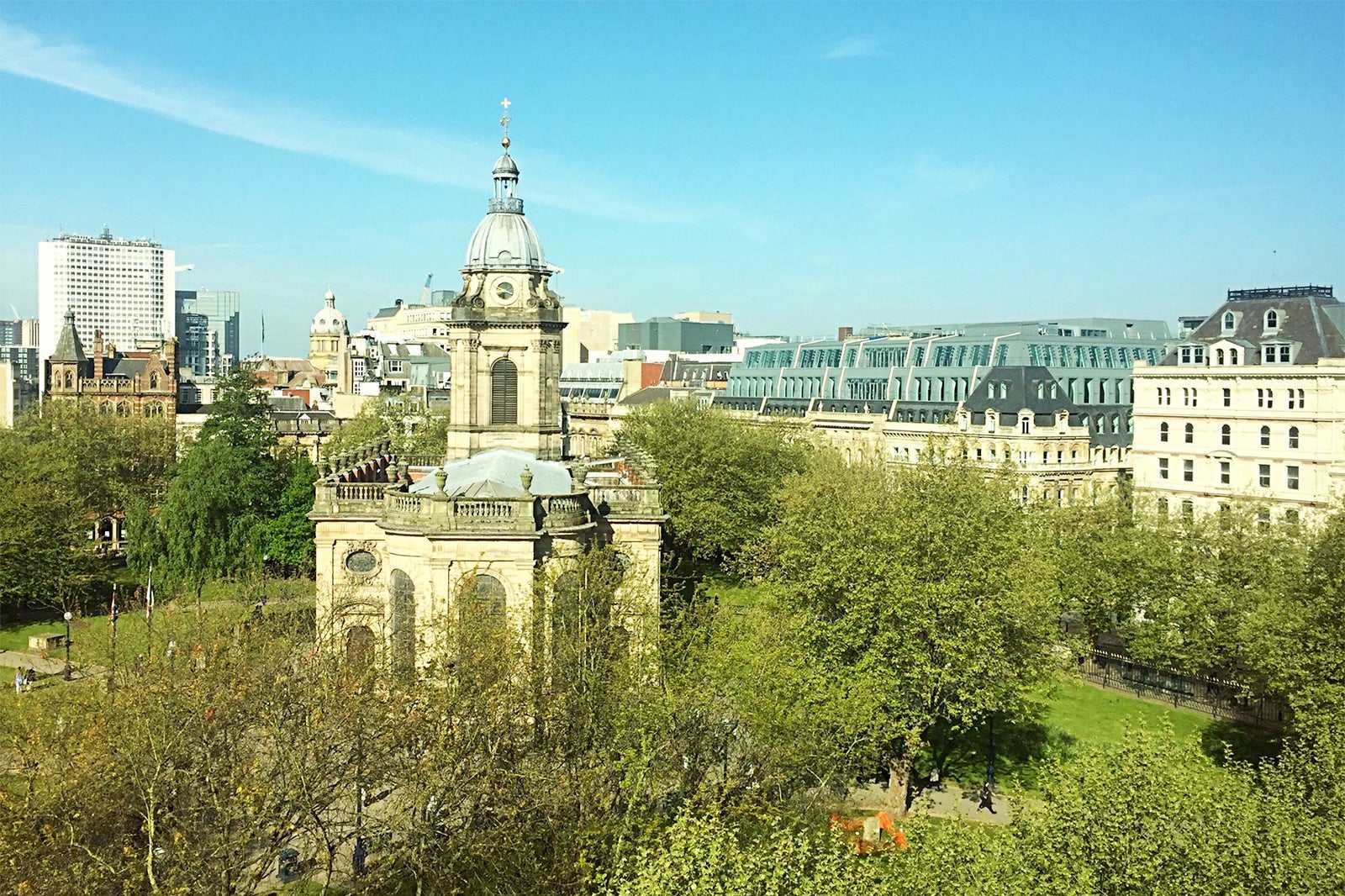
foto de Laura Creaven (CC BY-SA 3.0) modificada
Good to know about St Philip's Cathedral
Every now and then, St Philip's Cathedral hosts special events like concerts, performances, exhibits and talks. Some take place every week, such as biblical talks. However, if you want to be in town for the special events, check out their website so you can plan ahead.
St Philip's Cathedral has a ramp and large double doors, making it wheelchair-friendly. If you require assistance, you can ask the staff for help. They are trained to assist with different types of disabilities. Since the Cathedral is small, the crowds can pile up easily. If you simply want to go around the site, make sure to avoid service hours or special events.
The closest stations to St Philip’s Cathedral are Snow Hill and New Street. Both are within a 10-minute walk from the historic building. If you’re shopping in Birmingham’s Jewellery Quarter, the cathedral is less than 1 mile away. However, if you’re travelling by car, you can leave your vehicle at Colmore Row, Temple Row, or Waterloo Street. Then, you can make your way to the landmark on foot.
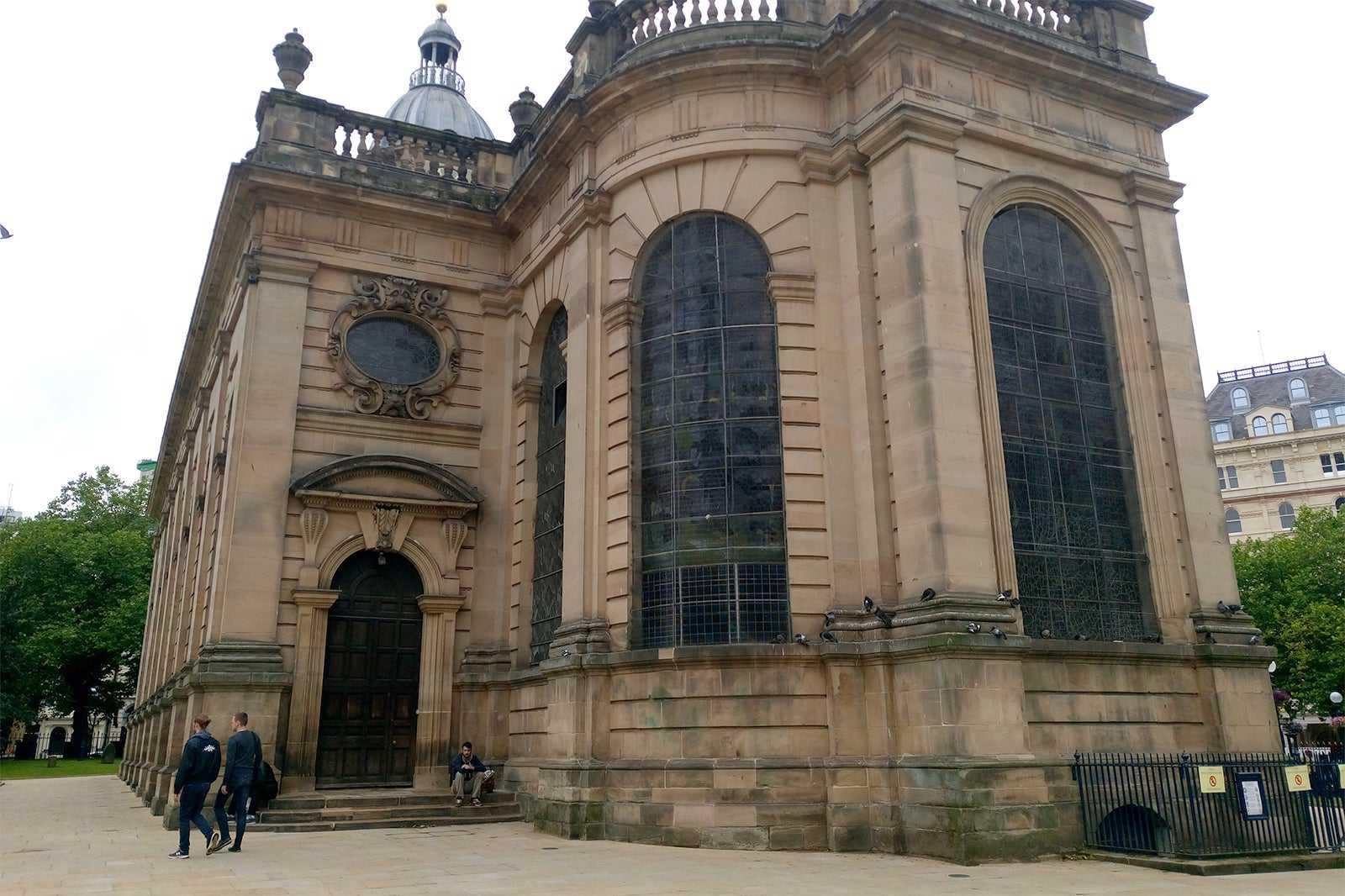
foto de Deryck Chan (CC BY-SA 4.0) modificada
St Philip's Cathedral in Birmingham
Localização: Colmore Row, Birmingham B3 2QB, UK
Abre: Monday–Friday from 7.30 am to 6.30 pm, Saturday–Sunday from 8.30 am to 5 pm
Telefone: +44 (0)121 262 1840













